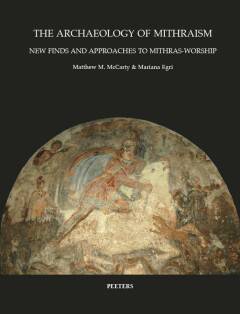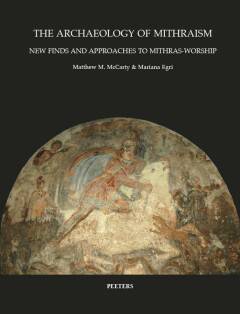
- Afhalen na 1 uur in een winkel met voorraad
- Gratis thuislevering in België vanaf € 30
- Ruim aanbod met 7 miljoen producten
- Afhalen na 1 uur in een winkel met voorraad
- Gratis thuislevering in België vanaf € 30
- Ruim aanbod met 7 miljoen producten
Zoeken
The Archaeology of Mithraism
New Finds and Approaches to Mithras-Worship
€ 166,45
+ 332 punten
Omschrijving
Over the course of the second century CE, worship of the Persianate god Mithras swept across the whole of the Roman Empire. With its distinctive traces preserved in the material record-including cave-like sanctuaries and images of Mithras stabbing a bull-the cult has long been examined to reconstruct the thought-systems of Mithraism, its theology, through such monumental trappings. This volume starts from the premise that, like much "religion" in the Roman world, the cult of Mithras must be examined through its practices, the ritual craft knowledge which enabled those rites, and the social structures thus created. What did Mithras-worshippers do? How do we explain the unity and diversity of practices observed? Archaeology has the potential to answer these questions and shed new light on Mithras-worship. Presenting new discoveries, higher resolution archaeological data on finds and assemblages, and re-evaluations of older discoveries, this volume charts new paths forward in understanding one of the Roman Empire's most distinctive cults.
Specificaties
Betrokkenen
- Uitgeverij:
Inhoud
- Aantal bladzijden:
- 226
- Taal:
- Engels
- Reeks:
- Reeksnummer:
- nr. 39
Eigenschappen
- Productcode (EAN):
- 9789042943520
- Verschijningsdatum:
- 8/07/2020
- Uitvoering:
- Paperback
- Formaat:
- Trade paperback (VS)
- Afmetingen:
- 208 mm x 272 mm
- Gewicht:
- 598 g

Alleen bij Standaard Boekhandel
+ 332 punten op je klantenkaart van Standaard Boekhandel
Beoordelingen
We publiceren alleen reviews die voldoen aan de voorwaarden voor reviews. Bekijk onze voorwaarden voor reviews.










